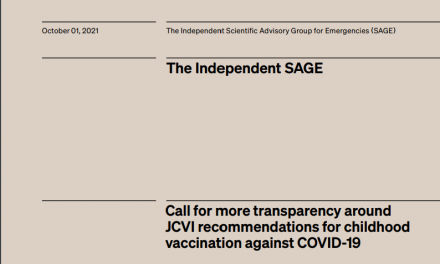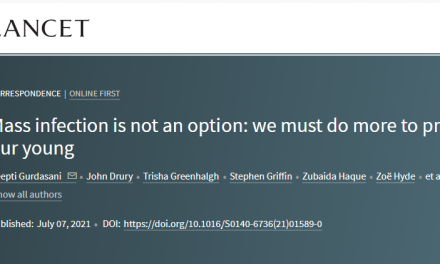The lockdown in Leicester constitutes a foreseeable crisis of the Government’s own making. It has come too late and, by being imposed on the locality, rather than being developed and implemented with the locality, it risks creating uncertainty, dissent, and even disorder. In the case of Leicester, and for future such cases, we advocate a response that is led by local government, supported by agencies such as PHE Health Protection Teams, the NHS and the Police and with additional funding from central government. The imposition of local restrictions should only be considered in the context of such an overall package of support, they should only be a last resort and used as a temporary measure. Such an approach will maximise both the efficacy of infection control measures and public support for these measures.
1. The situation in Leicester was both predictable and avoidable. It derives from the premature lifting of lockdown restrictions at a time when the virus is still circulating widely in some areas, when there is still no functional system of find, test, trace isolate and support and when the Prime Minister was sending an implied message that things are ‘back to normal’.
2. The current situation arose out of a failure to respond to the increase of infections in Leicester (and other localities) at an early stage and before they reached crisis levels. This was a result of several factors: (a) an excessive centralisation and unavailability of data; (b) the fragmentation of the testing system; (c) a lack of coordination with both the local authorities and with the NHS, PHE and other agencies locallyin understanding the cause, nature and response to the outbreak. This has eroded trust in government and the information it provides about COVID-19 risk.
3. Leicester is a city rich in multiple cultures and traditions, yet also has high levels of disadvantage and poverty. The imposition of a lockdown, without the prior involvement of local authorities, has already created massive confusion about who can do what, where and when. It risks creating a deep sense of resentment and of inequity in the local populations. It also creates a situation in which racist groups may politicise that resentment by blaming ethnic minorities for the lockdown.
4. These resentments and divisions feed into resistance to restrictions. If this is met by repressive measures on behalf of the police and other authorities then there will be a serious risk of local outbreaks of disorder and for that disorder to spread to other areas with similar resentments. Widespread disorder would be disastrous for the entire national response to the pandemic.
5. Rather than responding to local increases in infection with centrally imposed restrictions and repression we call for a local response rooted in additional support to the affected population. This has five elements:
- First, rapid availability of all local data deemed necessary by the local authority, with sufficient detail (down to postcode level at a minimum) to underpin and help inform the local response
- Second, a substantial increase in active case finding, supported by enhanced local testing facilities, located so as to be accessible to the affected populations and with outreach to those unable to access them. While a telephone-based system of contact tracing can play a role, long experience with epidemics elsewhere shows that it is essential to “walk the streets” to gather intelligence on the nature of the outbreak, for example whether transmission is in homes, at a workplace, or somewhere else. These activities should be undertaken in close consultation with the local communities most affected, explaining both the need to be tested, provide contacts, and why it is important for cases and their contacts to self-isolate, and also the practical steps involved in doing so (such as where to get tested) using tailored public information campaigns in appropriate languages. These need to be done in a culturally appropriate manner with rapid but meaningful co-production of measures working with local community networks.
- Third, the coordination of the actions of all organisations involved in testing and tracing, delivering a single data pipeline to local authorities and other agencies that need it, with ownership vested in local authorities that are known to and trusted by local populations
- Fourth, the provision by central government of substantial support to those cases and contacts who are required to self-isolate which addresses the specific needs of affected populations (e.g. those living in multi-generational households) and which, at a minimum, fully covers loss of income and organises free accommodation for isolation where needed.
- Fifth, the use of additional restrictions on local activity. However, these should only be applied as an emergency last resort while the enhanced testing process identifies hotspots and achieves the isolation of those infected. Moreover, they should be accompanied by full financial compensation to those affected and their contacts, particularly local small, medium, and large businesses, many of which have been making substantial investments to re-open safely.
6. This approach demands clear lines of accountability. At a local level, it is local authorities that have the appropriate democratic mandate to take action and who can be held to account. They bring together a range of functions necessary for a comprehensive response and, where they do not, they have extensive experience in convening multi-agency responses. However, they operate within a national legal framework, albeit one that lacks clarity in various respects, and they vary in their capacity to develop an effective response. Consequently, there should be a statutory obligation on local authorities to set out in detail how they will respond once a threshold of cases has been exceeded. The German threshold of 50 cases per 100,000 population over a seven day period seems appropriate.
7. We expect further instances of local “spikes” of infection in other towns and cities. We call on the government to coordinate with local authorities in order to achieve early identification of problems, to define their criteria for intervention and also their criteria for terminating these interventions.



